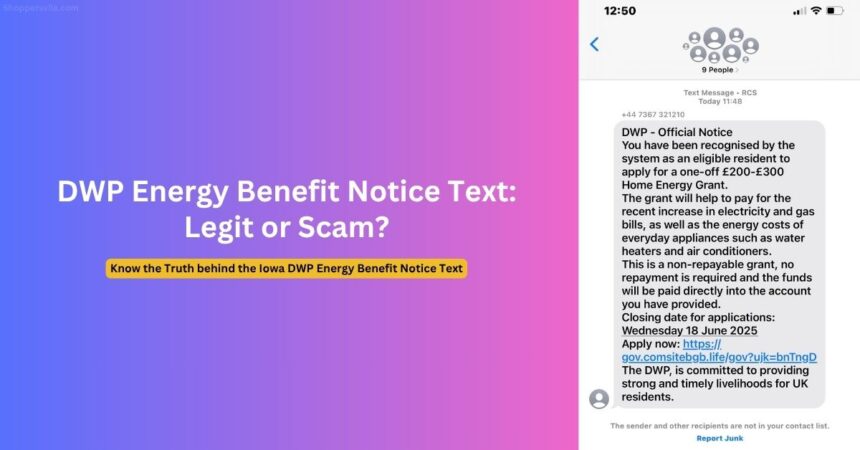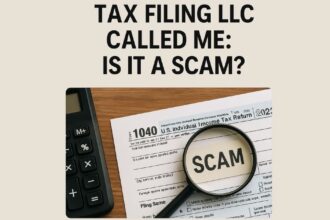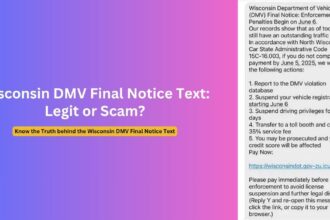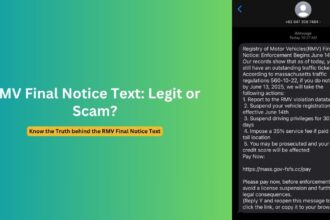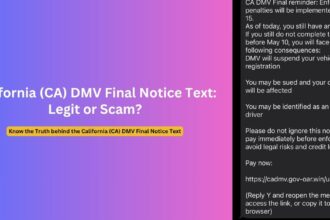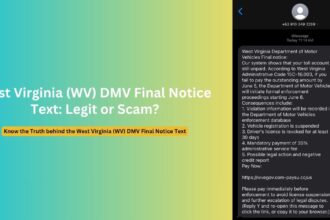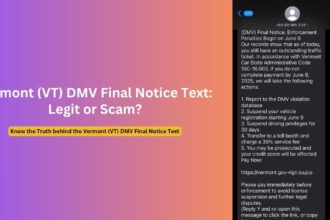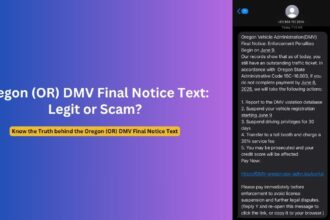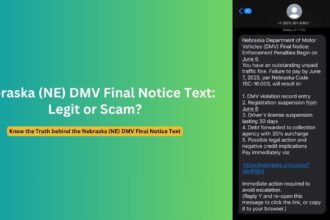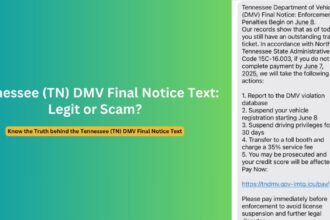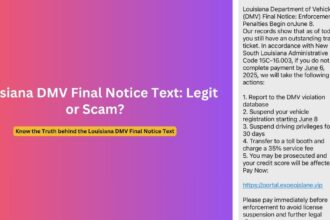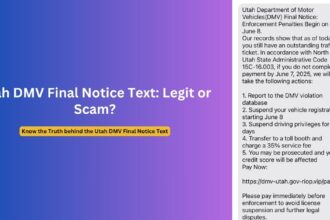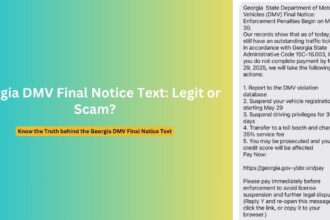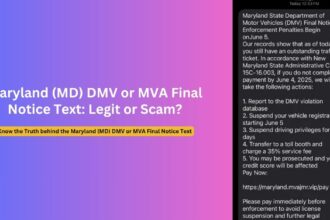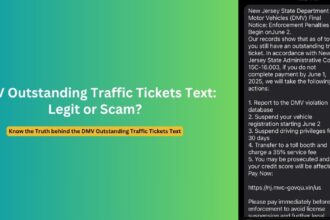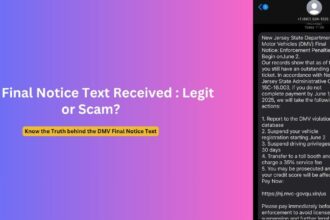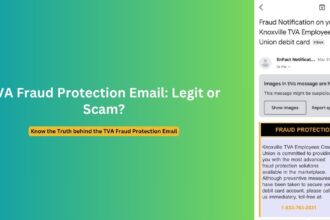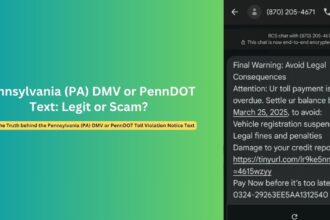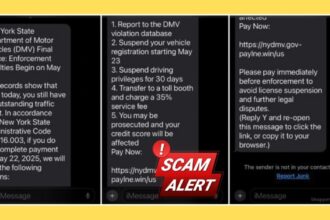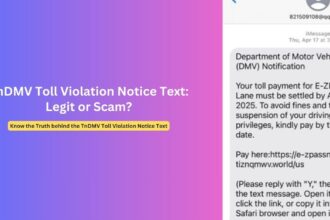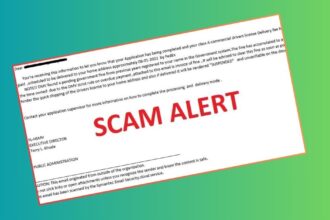A sophisticated scam campaign is targeting UK residents with fake text messages claiming to be from the Department for Work and Pensions (DWP). These fraudulent messages promise energy grants of up to £300 but are designed to steal personal information and money from vulnerable victims.
Following the government’s recent announcement of the expanded Warm Home Discount scheme, scammers have launched a coordinated attack using multiple fake DWP notices. Residents across England, Scotland, and Wales are receiving these deceptive messages, with local authorities and police forces issuing urgent warnings.
Overview of the DWP Energy Benefit Scam Campaign
The scam operation involves multiple variants of fake DWP messages, each targeting different demographics with promises of non-existent energy benefits. The timing is particularly cynical, as scammers are exploiting the legitimate government announcement about the Warm Home Discount expansion to confuse and deceive recipients.
On June 19, 2025, the UK government announced that the Warm Home Discount would be expanded to help 6 million households with £150 off their energy bills. Within hours of this announcement, scammers began flooding mobile networks with fake messages offering larger amounts and requiring immediate action.
The real Warm Home Discount operates automatically – eligible households receive the £150 credit without needing to apply. However, scammers are claiming recipients must “apply” for various fictional energy benefits, creating urgency through fake deadlines.
How the DWP Home Energy Grant Text Scam Works
The scam follows a predictable pattern designed to exploit people’s financial concerns during the cost-of-living crisis:
Step 1: Initial Contact Victims receive unsolicited text messages claiming to be from the DWP, often using official-sounding language and government terminology.
Step 2: False Eligibility Claims The messages state that recipients are eligible for energy grants ranging from £200-£300, significantly higher than legitimate government support.
Step 3: Fake Urgency Every message includes a tight deadline, typically within days of receipt, claiming that failure to act will result in losing the “benefit.”
Step 4: Suspicious Links Recipients are directed to click on shortened URLs that lead to fake websites designed to harvest personal information.
Step 5: Data Harvesting The fraudulent websites request sensitive information including full names, addresses, National Insurance numbers, and banking details.
Step 6: Financial Exploitation Some variants request “test payments” of £1 to “verify” bank accounts, which are then used to gain unauthorized access to victims’ finances.
Official Alerts and Warnings Across the UK
London Metropolitan Police Alert
The Metropolitan Police have issued warnings to London residents about the surge in DWP scam messages, particularly targeting vulnerable pensioners in boroughs across the capital.
Manchester and Greater Manchester Warning
Greater Manchester Police report increased incidents of DWP energy benefit scams, with particular concern for elderly residents in areas including Salford, Bolton, and Stockport.
Birmingham and West Midlands Campaign
West Midlands Police have documented cases across Birmingham, Wolverhampton, and Coventry, noting that scammers are exploiting local community groups and social media to spread awareness of their fake “benefits.”
Edinburgh and Scottish Borders Alert
Police Scotland have issued warnings across Edinburgh, Glasgow, and Aberdeen, emphasizing that the Scottish government’s energy support schemes operate through official channels only.
Cardiff and South Wales Notice
South Wales Police report targeting of communities in Cardiff, Swansea, and Newport, with particular emphasis on protecting Welsh-speaking elderly residents who may be more vulnerable to official-sounding messages.
Newcastle and North East England
Northumbria Police have documented cases across Newcastle, Sunderland, and Middlesbrough, working with local councils to spread awareness about the scam.
Local authorities from Cornwall to the Scottish Highlands have reported similar patterns, indicating a nationwide coordinated attack on UK residents.
Fake Text Message Patterns and Examples
Scammers are using at least three distinct message variants to maximize their reach:
Variant 1: Winter Heating Allowance Scam
Example Message:
DWP Official Notice: According to DWP (Department for Work and Pensions) records, you have not yet submitted an application for Winter Heating Allowance for 2024-2025. It is important that you complete your application by 17 June 2025 to ensure you receive your £300 allowance. If you do not submit your application by the deadline, you will not be able to receive the subsidy.
Target: Primarily pensioners and elderly residents
Key Deception: Uses terminology similar to the legitimate Winter Fuel Payment
Variant 2: Energy Allowance Notice Scam
Example Message:
DWP – Energy Allowance Notice: Your account shows that you are eligible to apply for an Energy Allowance for 2024-2025 up to a maximum of £300. Please complete the submission process by June 10th. Late applications will not be accepted and will be void.
Target: General population
Key Deception: Claims existence of a fictional “Energy Allowance” scheme
Variant 3: Energy Benefit Scheme Scam (Most Sophisticated)
Example Message:
DWP – Energy Benefit Notice: You have been successfully enrolled in the UK Government’s Energy Benefit Scheme and are eligible to apply for a one-off £200-£300 Home Energy Grant. The grant will be used to pay directly for your recent household energy bills, including electricity and gas bills, as well as bills for high-frequency appliances such as water heaters, radiators and air conditioners. The subsidy is a non-repayable government grant and is designed to help you maintain a basic level of comfort and stability in your life against the backdrop of rising energy prices, and is a legitimate entitlement to which you are entitled. It is important that you complete your application by Saturday 21 June 2025 or you will automatically be deemed to have forfeited your eligibility. Please click on the following link to submit your application now to ensure that the funds are released on time: https://rebrand.ly/m0dky3e?yag=pQ7RrH DWP has always adhered to the law-based, livelihood-first service mission to protect the safety and dignity of every resident’s life.
Target: Households struggling with energy costs
Key Deception: Most detailed fake explanation with official-sounding language
Critical Red Flags to Identify Fake DWP Texts
Language and Terminology Red Flags
- Awkward phrasing: “law-based, livelihood-first service mission” is not how the DWP communicates
- Repetitive language: “legitimate entitlement to which you are entitled”
- Informal tone: Real DWP communications are formal and precise
Technical Red Flags
- Suspicious URLs: Shortened links like “rebrand.ly” instead of official gov.uk websites
- Non-official phone numbers: Mobile numbers starting with 07xxx instead of official helplines
- Generic greetings: No personalization or reference to your actual circumstances
Content Red Flags
- Inflated amounts: Offering £200-£300 when real support is £150
- Application requirements: Legitimate benefits are automatically applied
- Urgent deadlines: Real government schemes don’t operate with such tight timescales
- Immediate action required: Pressure tactics designed to prevent careful consideration
Contact Method Red Flags
- Unsolicited texts: DWP rarely initiates contact via SMS
- Follow-up calls: Scammers often call from numbers like 07775 after sending texts
- No alternative contact: Real government communications provide multiple verification options
How to Protect Yourself from Fraudulent DWP Energy Texts
Before You Respond
- Pause and think: Take time to consider whether the message seems legitimate
- Check official sources: Visit gov.uk directly to verify any claimed benefits
- Don’t click links: Never click on shortened URLs in unexpected messages
- Verify independently: Contact the DWP directly using official numbers from their website
Verification Steps
- Official website check: Only trust information from gov.uk domains
- Contact verification: Call the DWP using numbers from their official website
- Cross-reference: Check local authority websites for scam warnings
- Seek advice: Ask trusted friends or family members for their opinion
Protective Measures
- Enable spam filters: Use your phone’s built-in spam protection
- Register with TPS: The Telephone Preference Service can reduce unwanted calls
- Educate family: Ensure elderly relatives know about these scams
- Stay informed: Follow official government social media accounts for updates
What to Do If You Receive a Scam Message
Immediate Actions
- Don’t respond: Avoid clicking links or replying to the message
- Don’t call back: Ignore any phone numbers provided in the message
- Take screenshots: Preserve evidence of the scam message
- Delete the message: Remove it from your phone after documenting it
Reporting the Scam
- Report to 7726: Forward the scam text to the free SPAM reporting service
- Contact Action Fraud: Report the incident to the UK’s fraud reporting center
- Inform your network: Share the warning with friends and family
- Contact your bank: If you provided any financial information, alert your bank immediately
If You’ve Already Responded
- Contact your bank immediately: Cancel any compromised cards or accounts
- Change passwords: Update all online account passwords
- Monitor accounts: Check for unauthorized transactions
- Report to police: File a report with your local police force
- Contact Action Fraud: Report the full details of what happened
Frequently Asked Questions
1. Is the DWP Energy Benefit Notice or Energy Allowance Text Legitimate?
No, these text messages are completely fraudulent. The DWP does not operate any schemes called “Energy Benefit Notice,” “Energy Allowance,” or “Winter Heating Allowance.” The only legitimate energy support scheme is the Warm Home Discount, which provides £150 automatically to eligible households without requiring any application.
2. How Can I Tell if a DWP Text Message is Real?
Genuine DWP communications will always direct you to official gov.uk websites, never use shortened URLs, and typically won’t arrive as unsolicited text messages. Real DWP letters and communications are personalized and don’t create artificial urgency with tight deadlines. When in doubt, contact the DWP directly using official contact details from their website.
3. What Information Do These Scams Try to Steal?
Scammers typically request full names, addresses, dates of birth, National Insurance numbers, bank account details, and card information. Some sophisticated versions ask for “test payments” of £1 to verify accounts, which then provide access to victims’ banking information.
4. Why Are These Scams Appearing Now?
The timing coincides with the government’s announcement of the expanded Warm Home Discount scheme. Scammers exploit legitimate government announcements to create confusion and make their fake messages seem more credible. The cost-of-living crisis also makes people more receptive to offers of financial help.
5. What Should I Do If I’ve Already Fallen for This Scam?
Immediately contact your bank to cancel any compromised cards or accounts, change all online passwords, monitor your accounts for unauthorized activity, and report the incident to Action Fraud and your local police. The sooner you act, the better chance you have of preventing financial loss.
Conclusion
The DWP energy benefit notice scam represents a sophisticated fraud operation targeting vulnerable UK residents during challenging economic times. By understanding the red flags, knowing how to verify legitimate communications, and taking protective measures, you can avoid becoming a victim.
Remember that legitimate government support schemes like the Warm Home Discount operate automatically for eligible households. You should never need to apply for these benefits via text message links or provide sensitive information to claim them.
If you encounter any suspicious messages claiming to be from government departments, always verify through official channels before taking any action. Your vigilance not only protects you but also helps protect others in your community from falling victim to these cruel scams.
Stay informed about the latest scam alerts and consumer protection advice with ShoppersVila.com – your trusted source for staying safe in the digital age.
